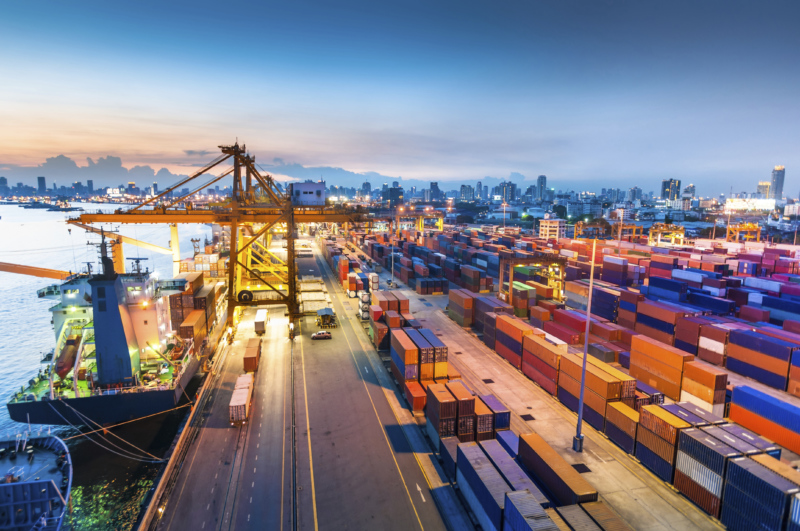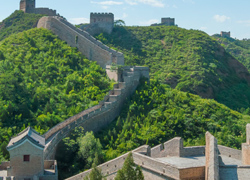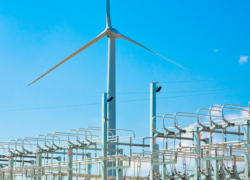Facilitating Asia-Latin America Trade Linkages

This piece was originally published in The Association of Women in International Trade (WIIT) February/March Communique.
Since the Global Financial Crisis in 2008, many Latin American nations have been eager to improve trade and investment ties with a wider group of economic partners. Several governments have turned their attention to Asia, in particular, even establishing new sub-regional groupings such as the Pacific Alliance to better integrate Asian and Latin American economies. Of all of the Asian nations, ties with China are among the most coveted. China’s booming trade and finance are potentially transformative for some Latin American economies. Relations with Korea and Japan are also of considerable interest, although the latter has been active in Latin America for many decades.
Chinese, Korean, and Japanese economic relations with Latin America vary considerably. Chinese engagement with Latin America, whether by state banks, state-owned enterprises, or private firms, has tended to adhere to the three tenets of the “going-out strategy,” which China published in the late 1990s. For decades now, Chinese deals—in Latin America and other regions—have focused on resource acquisition, access to export markets, and internationalization of Chinese firms. More recent engagement has also sought to support some elements of Beijing’s exceedingly complex economic reform agenda.
China’s adherence to these tenets means that trade with Latin America has remained focused on the region’s extractive and agricultural sectors. Although trade is booming, after two decades of enhanced economic engagement with the region, Chinese imports from Latin America still consist overwhelmingly of raw materials. Chinese exports to the region increasingly consist of high-tech goods, such as automobiles, trains, computers, cell phones, and telecommunications infrastructure. Chinese investment and finance in the region are similarly focused on extractives and agriculture, as well as on the development of certain types of infrastructure. As evident in the Inter-American Dialogue’s China-Latin America Finance Database, from 2005 to the present, Chinese policy banks (China Development Bank and China Eximbank) have financed $24 billion in infrastructure projects (e.g., highway and facility construction), as well as approximately $100 billion in energy projects, some of which involved energy infrastructure development.
Japanese trade with Latin America is far smaller in scale than China’s, but is more diversified. Much like China’s current engagement with the region, Japan’s initial economic overtures in Latin America focused extensively on resource acquisition and export of goods and production. In the 1970s, however, Japanese Foreign Direct Investment (FDI) largely shifted to the manufacturing sector, driven by an industrial development strategy in Japan and import substitution policies in Brazil and other Latin American nations. During this period, Japanese firms secured access to the region’s markets by investing heavily in Latin American Countries (LAC’s) shipbuilding, textile, steel, and automobile industries.
As indicated in a 2016 Inter-American Development Bank report on the topic, Korea’s trade with the region is also far smaller in scale than China’s, although there are some similarities in terms of composition. In general, however, Latin American exports to Korea are more diversified and are more weighted towards manufacturing products than China’s.1
Latin America’s success integrating trade and developing supply chains with Asian nations depends largely on Latin American country’s own policies, but also on the nature of trade and investment relations with individual Asian countries.
Certain Latin American nations, especially those with extensive natural resource endowments, maintain considerable production linkages with China. Latin America exports vary little in the way of value-added goods to China, however, with some limited exceptions in the mining and agricultural sectors. Mexican tequila sales and Chilean services exports are primary examples.
Latin America largely provides basic inputs to other Asian nations as well. In the case of Japan, however, companies operating in Latin America’s automobile and electronics sectors often serve domestic and third market exports, effectively boosting Latin America’s trade balance and foreign exchange earnings. A 2015 report by consulting firm PwC found that Japanese automakers accounted for nearly 35 percent of Mexico’s car production in 2014, 80 percent of which was exported to third markets.2 China is looking to develop similar models of production in countries such as Brazil and Mexico, but has yet to achieve Japan’s scale, which was accomplished over the course of decades.
There are some signs that Latin America could begin exporting more value-added goods to Asian nations. According to the 2017 OECD Latin America Economic Outlook,3 the ratio between Latin American value-added incorporated in Chinese gross exports rose from 1.5 in 2000 to nearly 2 in 2011. New plans to re-open a smelter in Peru, though likely damaging from an environmental perspective, are intended to increase exports of processed copper to China. And Colombian coffee growers are looking to sell ground coffee and ready-made coffee drinks to the Chinese market, generally through online sales. Moreover, as the OECD indicates, while the commodities-for-manufacturing trade will continue to dominate the relationship between Latin America and China, international fragmentation of production could open some doors for Latin American countries to participate in supply chain segments that were off-limits in the past.
The Pacific Alliance, an Asia-oriented trade bloc consisting of Mexico, Colombia, Peru, and Chile, has yet to really advance trade integration with Asian nations, despite some success marketing member nations and their brands. However, as indicated in a meeting on Japan-Latin America relations organized in 2015 by the Inter-American Dialogue, Japan will soon be the first East Asian nation to have free trade agreements with all four Pacific Alliance members. This provides a unique opportunity for Japan to both advance its own relations with the Pacific Alliance and to support intra-Pacific Alliance trade integration. Tokyo could do so by employing regional accumulation of rules of origin or other pro-supply chain policies.
The Trans-Pacific Partnership promised some new linkages between Asian and Latin American member nations. A revised version may still accomplish this, as might a Regional Comprehensive Partnership (RCEP) that incorporates some Latin American members. In the meantime, Latin American nations have negotiated free trade agreements (or economic partnership agreements in Japan’s case) with China, Korea, and Japan that have generally boosted trade and in some cases facilitated inward FDI.
For its part, the US might be indirectly encouraging greater Asia-Latin America trade integration. Protectionist trade policy from the White House in the coming months and years will in some cases be damaging to Asian production in Latin America, but might also create some opportunities for enhanced engagement on the part of China and other countries. In addition to hosting international anti-protectionism forums, China has indicated that it will expand and diversify trade with Latin American in the coming years, while encouraging more in the way of value-added exports among Latin America partner nations.
1 Mesquita Moreira, Mauricio and Antoni Estevadeordal. Korea and Latin America and the Caribbean: Striving for A New Phase in Japan-Latin America and the Caribbean Relations 15 a Diverse and Dynamic Relationship, Washington, DC: Inter-American Development Bank, 2015.
2 PricewaterhouseCoopers Co. Ltd., [chuunanbei toushi chijyo no doukou] “Investment trends in Latin America” (in Japanese), distributed at PwC and JALAC joint seminar in Tokyo, Japan, July 2015.
3 Latin America Economic Outlook 2016, OECD, CAF, and IDB, January 2016.



















